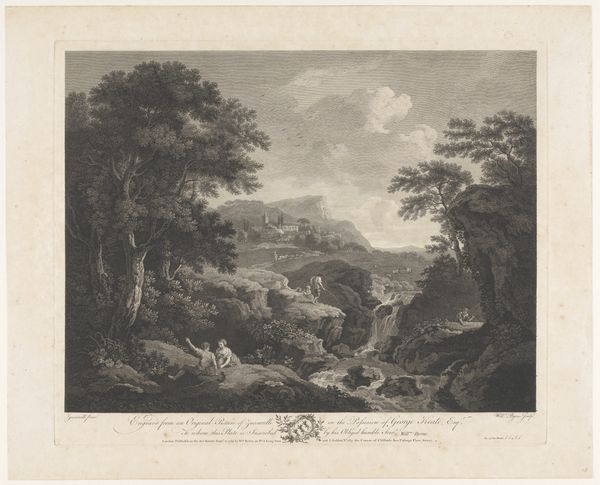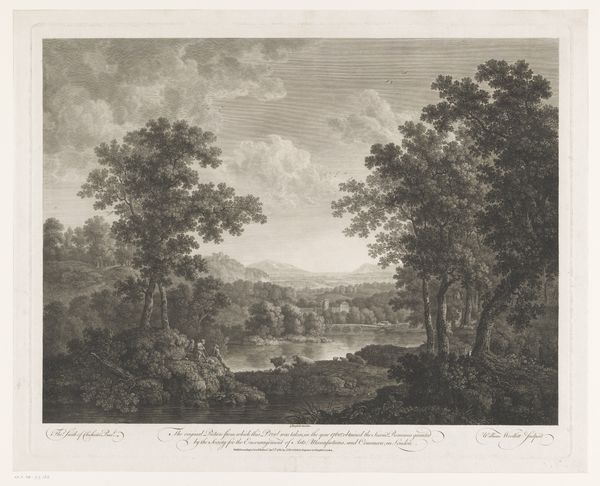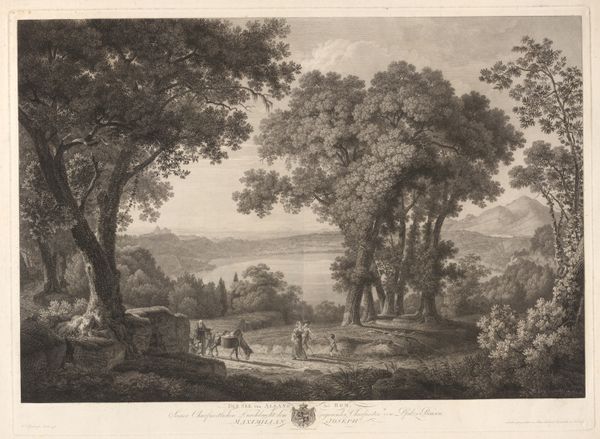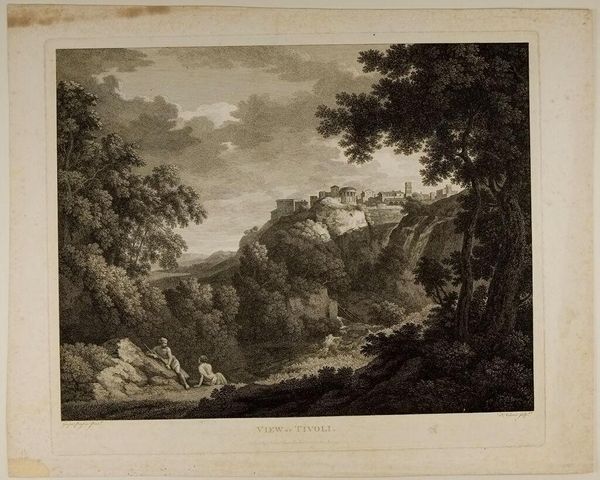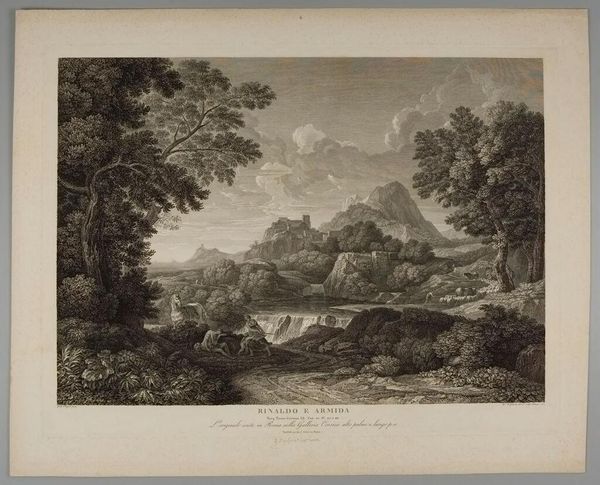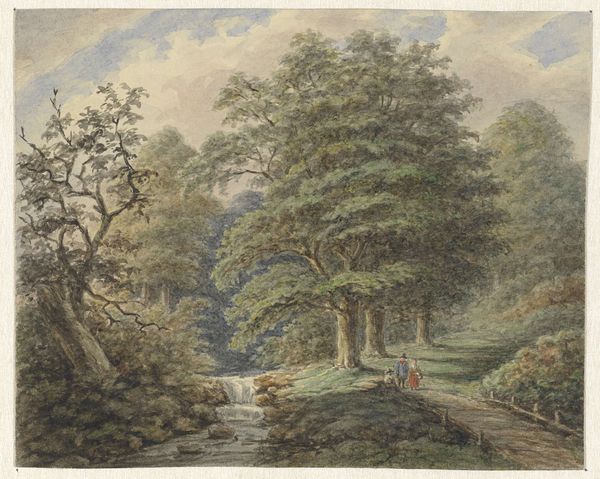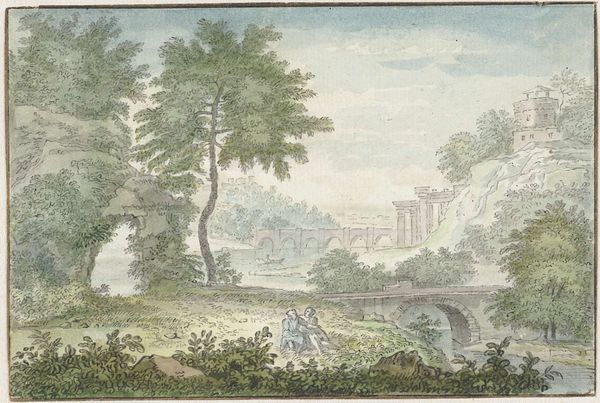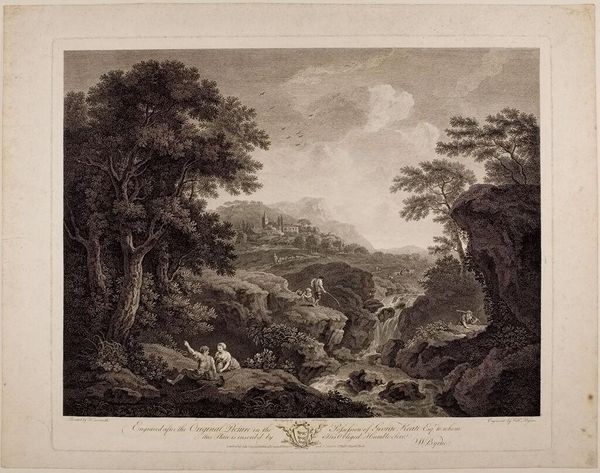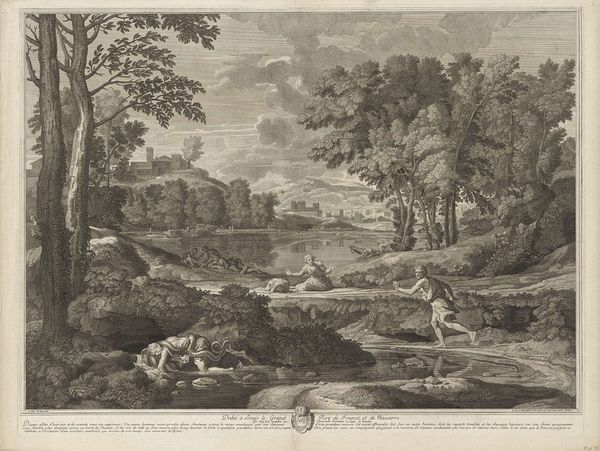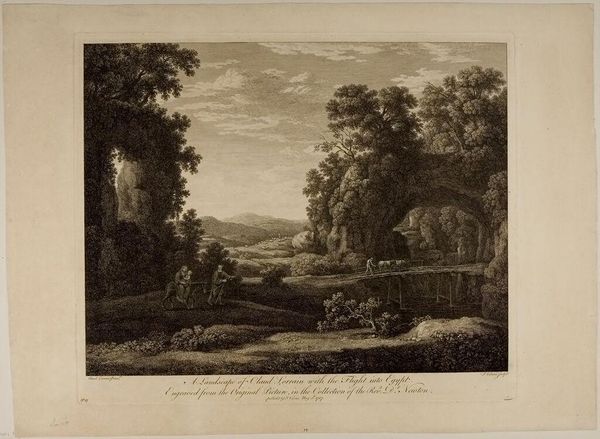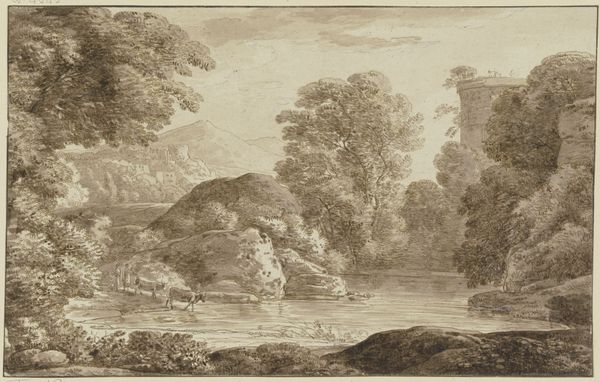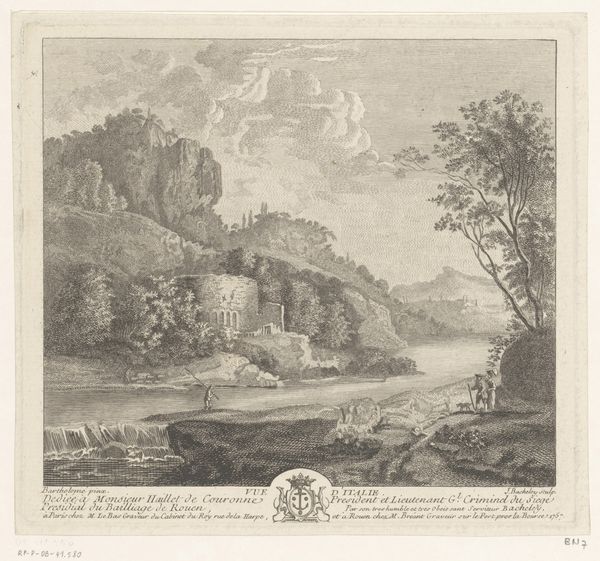
plein-air, watercolor
#
water colours
#
plein-air
#
landscape
#
river
#
figuration
#
watercolor
#
romanticism
#
mountain
#
watercolor
Dimensions: height 542 mm, width 619 mm
Copyright: Rijks Museum: Open Domain
Jacobus Wijsman made this aquatint etching, titled "Arcadian Landscape with Dancing Figures," around the late 18th or early 19th century. The print presents a scene steeped in pastoral idealism. Notice how the composition unfolds, with a progression from the dark, verdant foreground to the airy, light-filled distance. The figures, almost classical in their rendering, animate the scene, yet their presence seems less about narrative and more about establishing a harmony between humanity and nature. Wijsman uses the aquatint technique to create subtle gradations of tone and texture, evoking a soft, dreamlike atmosphere. The arcadian ideal—a vision of unspoiled nature and harmonious existence—served as a cultural signifier of a longing for simpler, more virtuous times. Consider how Wijsman's emphasis on the aesthetic qualities of the landscape functions within the discourse of the picturesque, inviting viewers to contemplate an idealized world. Ultimately, the artwork invites contemplation on the relationship between nature, culture, and the human imagination.
Comments
No comments
Be the first to comment and join the conversation on the ultimate creative platform.
